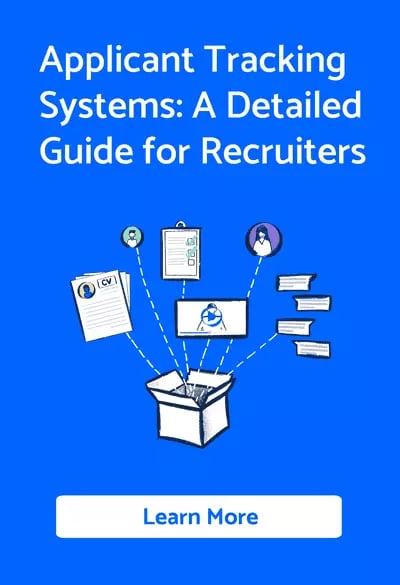In the dynamic world of startups and small-to-medium businesses (SMBs), the onboarding process often becomes an unsung hero in the employee experience.
It's where first impressions are formed and the foundation of the employee-employer relationship is laid. But let's delve deeper, armed with fascinating facts and figures, to truly grasp the enormity and complexity of this task.
Did you know that, according to a report by BambooHR, a staggering 31% of new hires quit their jobs within the first six months, with many citing poor onboarding experiences? This statistic alone illuminates the critical nature of the onboarding process.
Furthermore, a survey by Korn Ferry shows that nearly a quarter of employers believe their onboarding process does not adequately prepare new hires, highlighting a gap between expectation and reality.
The administrative side of onboarding is a mosaic of tasks – each piece, from paperwork to policy education, plays a vital role.
Consider this: the Society for Human Resource Management (SHRM) estimates that the average employer spends about $4,129 and 42 days to fill a position. Once filled, the clock starts ticking to transform this investment into productive engagement, a process heavily influenced by administrative onboarding.
Read our latest blog on the cost of onboarding around the globe.
In the thriving but often resource-constrained environment of startups and SMBs, the impact is even more pronounced.
A study by the National Association of Colleges and Employers found that companies with structured onboarding programs enjoy a 50% higher new hire retention rate. Yet, the administrative labyrinth of onboarding – from handling a myriad of forms to ensuring compliance with labour laws – remains a formidable challenge.
As we venture through this blog, remember: each statistic represents real experiences, and every process, is a potential pivot point in an employee's journey.
Check out our list of the top HR software for startups.
Let's explore the vast landscape of administrative onboarding, understanding its challenges and complexities, not just as a procedural necessity but as a crucial element in building a successful, resilient organisation.
Try GoHire Free Today 🚀
GoHire is the ultimate solution for startups and SMBs to simplify hiring and hire the best people, fast.
The Data Behind the Documentation
1. Volume of Paperwork
Did you know that the average onboarding process involves over 15 different forms for a new employee to complete?
These 15 or more forms encompass a wide range of documents, each serving a specific purpose. They may include tax forms (such as W-4 or equivalent in other countries), employment contracts, company policies and handbooks, direct deposit forms, emergency contact information, non-disclosure agreements, benefits enrolment forms, and more.
Each of these documents is crucial for different aspects of the employment relationship.
This data, from a report by HR Technologist, highlights the sheer volume of documentation required to bring a new hire into the fold legally and systematically.
2. Compliance Complications
A study by Deloitte revealed that 47% of companies consider legal compliance as one of the biggest challenges in onboarding.
This includes ensuring adherence to employment laws, data protection regulations, and industry-specific compliance requirements.
In an era of increasing data privacy concerns, organizations must handle sensitive employee information with the utmost care. Compliance with data protection regulations like the General Data Protection Regulation (GDPR) in Europe or the Health Insurance Portability and Accountability Act (HIPAA) in the United States is critical.
Mishandling employee data can lead to severe fines and loss of trust.
3. Time Taken in Onboarding
According to the Society for Human Resource Management (SHRM), the average time taken to complete the administrative aspect of onboarding can range from a few days to several weeks, depending on the complexity of the role and industry.
The time required for administrative onboarding often correlates with the complexity of the role. For example, onboarding a senior executive or a specialised technical role may take longer due to additional documentation, background checks, and access to sensitive information.
Background checks and reference checks can contribute to the time taken in the onboarding process. These checks are essential for ensuring the suitability of the candidate but may introduce delays.
System Setups and Technical Troubles
4. IT Onboarding Delays
A survey by Click Boarding indicated that 1 in 4 employees experience delays in IT setup, which includes email accounts, access to necessary software, and other technical tools. These delays can significantly impact the productivity and morale of new hires.
When new employees don't have timely access to essential IT resources such as email accounts, access to necessary software, and other technical tools, their productivity can be severely hindered. They may struggle to complete tasks, communicate with colleagues, or access critical information, which can lead to frustration and inefficiency.
IT onboarding delays can also impact the morale and engagement of new hires. Feeling unprepared and unable to fully participate in their role can be demoralizing for employees, potentially leading to a negative initial impression of the company. This negative experience may affect their commitment to the organisation and their overall job satisfaction.
Payroll Processing and Benefits Enrolment
5. Benefits Confusion
The Work Institute's Retention Report found that 12% of employee turnover is due to issues with benefits, including confusion during the onboarding process. This shows the importance of clear communication and efficient enrolment processes in benefits administration.
New employees may find it challenging to understand their benefit options and navigate the enrollment process. This can lead to mistakes in selecting benefits or missing out on valuable coverage, which can be frustrating and financially detrimental.
Benefits confusion can also be attributed to a lack of clear communication during the onboarding process. If the organization fails to provide comprehensive information about available benefits, deadlines for enrollment, and the impact on payroll, employees may feel left in the dark.
Orientation and Training Logistics
6. Orientation Efficiency
Gallup research suggests that only 12% of employees strongly agree their organisation does a great job of onboarding new employees, pointing towards the need for more structured and effective orientation programs.
Orientation is a critical component of the onboarding process. It's the phase where new employees are introduced to the company's culture, values, and their specific role within the organisation.
Many startups and SMBs may not have well-structured orientation programs in place. This can lead to a disjointed experience for new hires, causing confusion and potentially hampering their engagement and productivity.
Smaller businesses may struggle with resource constraints, making it challenging to dedicate time and personnel to develop and execute comprehensive orientation programs.
Data Management and Record-Keeping
7. Record-Keeping Requirements
Data management and record-keeping are crucial aspects of administrative onboarding, especially considering data protection regulations such as the UK Data Protection Act 2018 (which aligns with GDPR principles).
Employee records contain sensitive personal data, and mishandling this information can have serious legal and financial consequences for startups and SMBs.
Ensuring the security of employee records is paramount. Small businesses may lack dedicated IT and security personnel, making them vulnerable to data breaches if proper safeguards are not in place.
he UK Data Protection Act 2018 imposes strict requirements on how personal data should be collected, processed, and stored. Non-compliance can result in hefty fines, which can be particularly burdensome for smaller organizations.
To conclude
In wrapping up, the administrative dimension of onboarding is more than just a series of tasks; it's a foundational process that shapes an employee’s first impression and long-term relationship with the organisation.
With statistics underscoring the importance of each step, it’s clear that mastering the administrative onboarding process is not just a procedural necessity but a strategic imperative for startups and SMBs aiming to build a strong, engaged, and legally compliant workforce.






